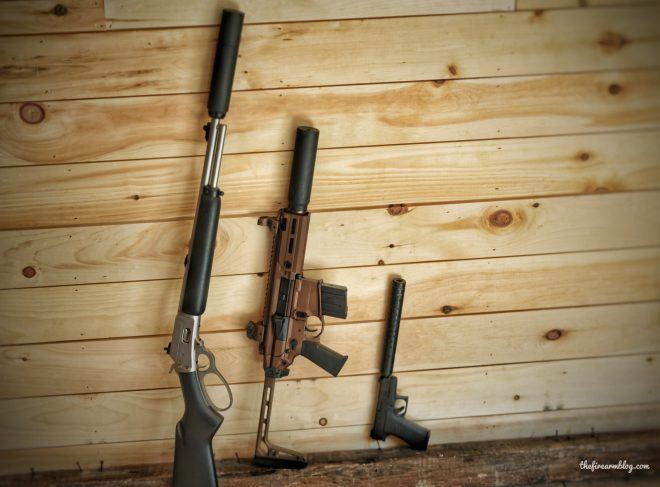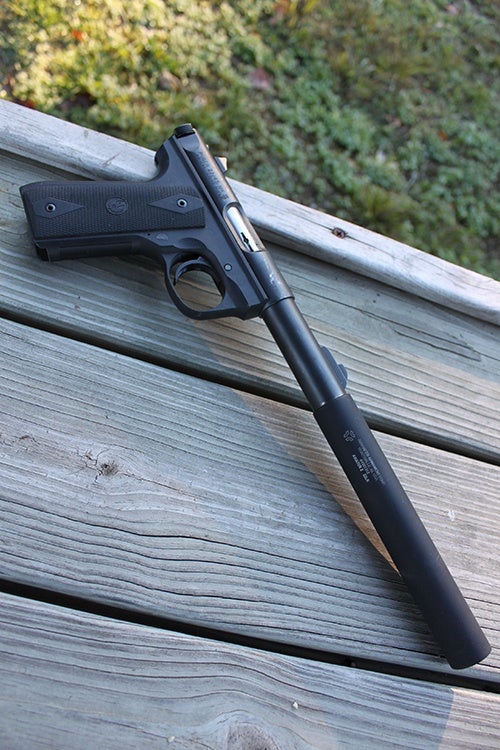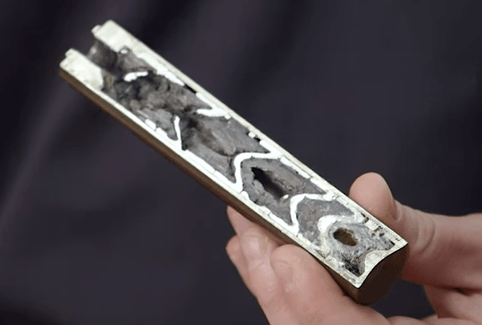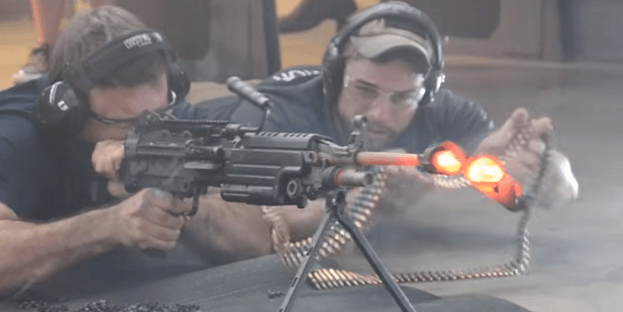Suppressors are great tools. Were it not for their status as an NFA item I reckon they’d be a far more common sight. Because of their status as NFA items, suppressors have attained a somewhat enigmatic reputation both inside and outside the firearms world. This mystery often leads to misunderstanding, confusion and apparently $200 tax stamps. Today we’ll explore the concept of owning a single suppressor for multiple guns – a practice I use to great effect.
Question: How long will your .22lr suppressor last shooting .223/5.56?
It’s no secret that both .22LR and .223/5.56 share almost the exact same bullet diameter, in fact, they’re separated by only a few thousands of an inch. This is actually a common trend in the firearms industry where the numbers and calibers can be confusing to the less informed. For example, you can absolutely shoot a .38 Special out of a .357 Magnum revolver, but you can’t shoot a .357 Magnum round out of a .38 Special. S&W .40 caliber will shoot just fine out of 10mm but the reverse doesn’t have a shot in the dark at working unless you like blowing your hands and your gun up.

Photo Credit Pete of The Firearm Blog
Much in the same vein, suppressors share a lot of diameters and dimensions with other suppressors that do different jobs. The perfect example of this is the .22LR suppressor. While it maintains almost the same bullet diameter as a 5.56 suppressor, the construction, volume and source material will all be different. In the video below, we get a good look at what happens when you attempt to use a .22LR rated can on a 5.56 rifle.
Answer: Not very long
First, props to the guy at West Coast Armory for being ballsy enough to do this while wearing only a biker helmet and a short sleeve shirt. Badass! Second, see how quickly the suppressor failed. The AAC AVIATOR2 suppressor lasted only 28 rounds before a catastrophic failure. This is to be expected though. A .22 caliber suppressor is designed to deal only with a small amount of expanding gasses. 5.56 being significantly larger fills the relatively small space in the suppressor up quickly and subsequently heats the smaller surface area of the suppressor sleeve up very quickly.

This AVIATOR2 suppressor isn’t destroyed, probably because its owner didn’t try to shoot Bubba’s .223 hand loads out of it.
The AVIATOR2 is an aluminum can not designed for larger rifle calibers nor full-auto fire. Given some beefier materials, the suppressor could last a bit longer but not much. The overwhelming force of 5.56 in such a compressed area will eventually overcome the small suppressor and tear it to pieces. This also comes at the cost of sound reduction, with nowhere for the expanding gasses to go, you’d basically be using an extremely inefficient suppressor and you’d risk damaging your hearing.
The end result is the complete failure of the poor suppressor in less than a full standard magazine. Most of you probably knew that was going to happen before even clicking on this article, however, the reverse is also true for trying to shoot .22LR out of a .223/5.56 silencer.
death by a thousand .22lr shots
We’ve clearly established that shooting .223/5.56 out of your .22LR can is not a good idea. But the reverse is also true. Shooting .22LR out of your AR’s suppressor can also lead to eventual failure and quite possibly ruin your expensive suppressor. While logic might tell you that it should be safe – because it is – it’s not in your best interest because it could lead to the loss of your investment – not to mention that 9 month wait time.

.22LR is known for being notoriously dirty, those who frequently shoot it will often have to clean their guns after a heavy shooting session. While the round is cheap, it also has its tradeoff that comes with the uncoated bullet, or at the most lightly coated bullet. In fact, no one has made a jacketed .22LR in almost 100 years. While .223 and 5.56 are both jacketed with a thick copper jacket, .22LR is mostly bare, at most being covered with a thin layer of polymer or copper plating that shears off quickly while traveling down the barrel to reduce fouling.
Over time, small particles of lead will eventually build up in a suppressor necessitating the need for cleaning. For sealed suppressors this can mean a lot of carbon and lead build-up that will eventually reduce the effectiveness of your suppressor, possibly rendering it not hearing safe. The amount .22lr you’ll have to put through a rifle can to foul it up enough is going to be quite high though somewhere in the thousands of rounds.

Left uncleaned, a .22lr suppressor will eventually build up a dangerous amount of carbon, un-burnt powder and lead in its baffles.
Some will note that the occasional use of .22LR out of a 5.56 suppressor is okay but most major manufacturers will advise against this, especially if the suppressor is not user-serviceable. The proper tool for the job will be the dedicated .22LR suppressor. Most .22LR silencers can be taken apart and cleaned after a long shooting session to avoid debilitating buildup.
Know your equipment
.22LR and 5.56 aren’t the only considerations to take in the suppressor world. Your .22LR can obviously won’t last to sustained fire from your 5.56 AR but that doesn’t mean it a good idea to use 5.56 out of your .30 caliber can just because it says its a rifle caliber can. Some suppressors are designed to sustain only a moderate firing pace and full-auto or rapid-fire can irreparably damage your suppressor if you’re not careful. Even suppressors designed for full-auto fire have a limit.

West Coast Armory also decided to see how long it would take to break an actual suppressor rated for full-auto fire. Quick Answer: 700 rounds
Another common mistake is using a pistol caliber rated can with rifle calibers. When you get down to it, the truth is that the best course of action is to have multiple silencers for each of your firearms for maximum efficiency. While it may work the first time, you could possibly be doing damage to a pricey investment. At the very least, do some research to determine if what you’re doing is firstly safe, and secondly, if it’s going to adversely affect your equipment beyond what you’re willing to sacrifice.
Do you use one suppressor for multiple guns? What is your preferred .22lr silencer? Let us know down in the comments and drop us a line to let us know why. As always, thanks for dropping by and we’ll see you next week for the next edition of The Rimfire Report.
We are committed to finding, researching, and recommending the best products. We earn commissions from purchases you make using the retail links in our product reviews. Learn more about how this works.
 Your Privacy Choices
Your Privacy Choices
